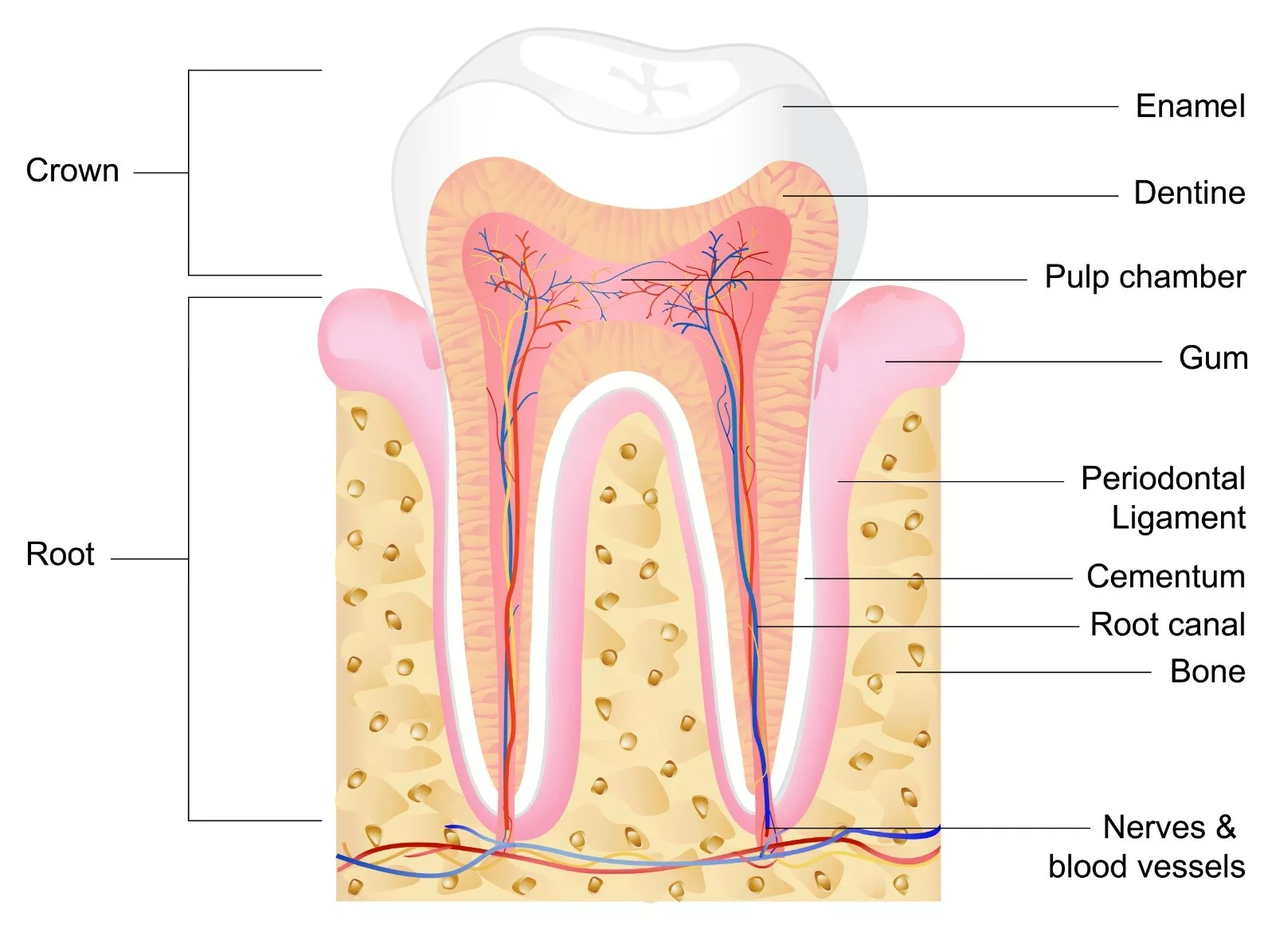Has your dentist just prescribed you a Root Canal Treatment? If so, you may feel apprehensive and have many questions about the procedure. In this article, we will answer all your possible questions. But before we jump onto that, let’s discuss what a root canal treatment is.
Root canal treatment, also known as Root canal, involves removing the dead or inflamed pulp tissue and filling it with a specific dental material.

Your tooth structure consists of a hard outer layer called Enamel and a second relatively softer layer called Dentin. The innermost living soft tissue, the pulp, resides in the core. It is vascular and contains blood vessels, nerves, and connective tissue, mainly responsible for tooth sensations.
Why do I need a Root Canal Treatment?
Dentists perform root canal treatment to remove infected and inflamed pulpal tissue. A cracked or damaged tooth and an untreated, deep cavity can cause the pulp to become inflamed and contaminated with bacteria, resulting in severe sensitivity and pain. 1Root Canals [Internet]. Mouthhealthy.org. 2023 [cited 2023 Feb 6]. Available from: https://www.mouthhealthy.org/all-topics-a-z/root-canals/
Occasionally, your dentist might even recommend getting a root canal treatment despite having no pain. This usually happens when a long-standing infection or cavity results in contaminated dead pulp. Nevertheless, you must still remove and clean it to prevent complications and stop the spread of infection.
Signs and Symptoms:
The common indications for a root canal treatment are as follows:
- Pain in the tooth that doesn’t go away.
- Extreme sensitivity to cold, hot, or specifically sweets.
- Swelling of gums or jaw: If you experience swelling in your gums or jaw, it may indicate pus formation due to an infected pulp. Draining and treating the swelling is essential to prevent the spread of infection and any potential complications.
- Discolored tooth: The infected tooth usually appears discolored and darker.
- Loose or mobile tooth due to the accumulation of pus all around.
- Sensitivity to pressure
- Occasionally, you may spot a pustule above the infected tooth, indicating the site of pus drainage.
How long does the Root Canal Treatment take?
Contrary to the common perception, root canal treatment is now a quick and pain-free procedure that can be performed in single or multiple visits depending on the tooth conditions and the preference of the treating doctor.
On average, it usually takes 30 to 40 minutes for the procedure. However, treating large teeth with multiple roots, like upper and lower molars, can take up to one hour and 30 minutes.
How to Prepare for the appointment
- Your dentist might prescribe antibiotics, depending on the extent of the infection. Make sure to take them as advised.
- Avoid hard and grainy foods like nuts that can get stuck in the cavity and worsen the pain.
- We recommend eating a healthy meal before the procedure.
The Procedure:
The procedure begins with a detailed assessment of the involved tooth and numbing of the area by using a local anesthetic. If you are anxious, your doctor may use adjunctive medications such as nitrous oxide and sedatives to relax you.
After the medications, your dentist will isolate the tooth with a rubber sheet termed a rubber dam. This isolation is vital to maintain a sterile environment during the procedure.
The doctor starts the root canal procedure using a bur and a handpiece to access the pulp cavity. They then use small, specific instruments called files to remove all the dead and infected pulpal tissue. Next, the doctor uses endodontic files to scrape and shape the root canals carefully. This step cleans the canals and removes any remaining pulp, making filling them more accessible. Before filling, the canals are thoroughly disinfected and dried to ensure their health and longevity.
After some doctors perform the first part of the root canal procedure, they may place a temporary filling material to conclude the first visit. They then schedule a follow-up visit to fill the canals and assess the procedure’s outcome accurately.
In a single visit procedure, the doctor measures, seals, and fills the canals on the same visit to avoid future contaminations.
Depending on the treatment plan, your doctor places a temporary or permanent filling in the tooth crown. Most of the time, restoration, like a crown, is planned on top of the treated tooth to protect the tooth structure. This usually occurs on subsequent visits.Maintaining good oral hygiene before and after the treatment is essential for a successful outcome.
Take-Away:
In conclusion, root canal treatment is a standard and effective procedure for saving a damaged or infected tooth. With proper care and regular dental check-ups, a tooth with a root canal can last a lifetime. It is essential to seek prompt treatment if you experience any symptoms of a damaged or infected tooth, as delaying treatment can result in the need for more extensive and costly procedures in the future.
Refrences
- 1Root Canals [Internet]. Mouthhealthy.org. 2023 [cited 2023 Feb 6]. Available from: https://www.mouthhealthy.org/all-topics-a-z/root-canals/

